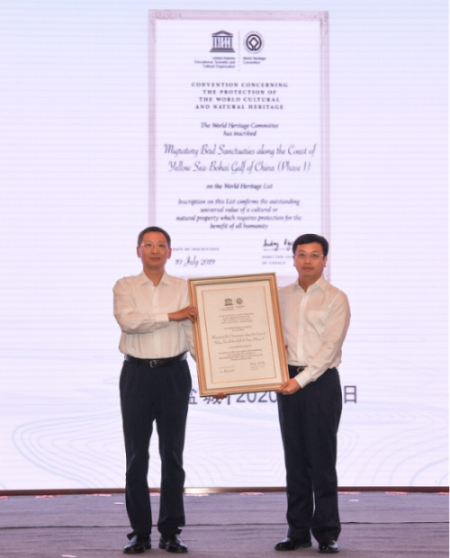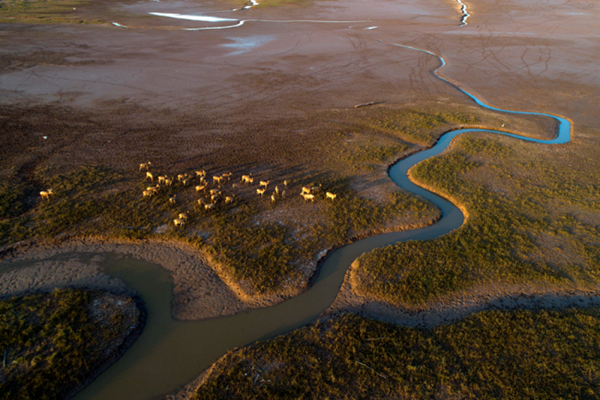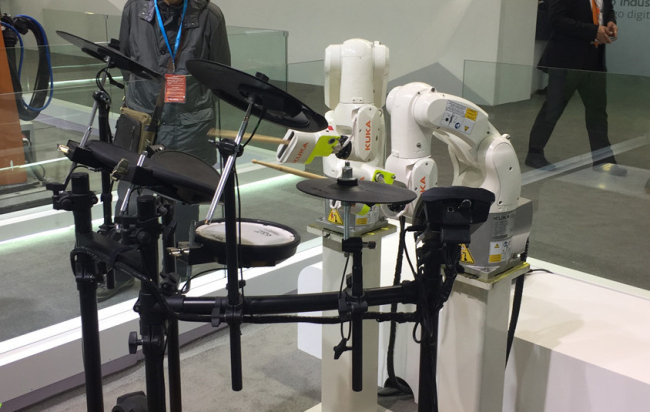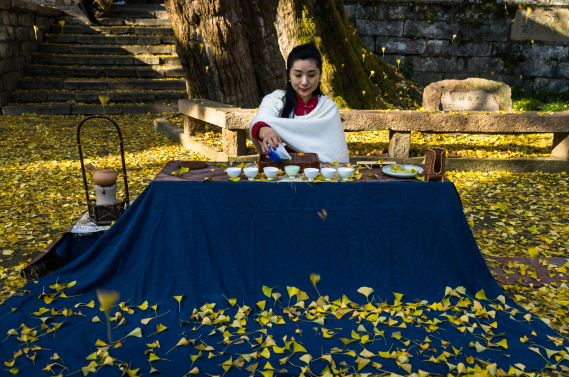
Yancheng City hosted a ceremony to mark the first anniversary of the Yellow Sea-Bohai Gulf coast inscribed on the UNESCO World Heritage List and also launch the Ecological and Environmental Protection Special Committee for the Huaihe River Green Economic Belt on July 5.
In the ceremony, over 170 guests witnessed the unveiling of the certificate marking the UNESCO recognition presented to Dai Yuan, secretary of the CPC Yancheng Committee, and the city’s mayor Cao Lubao. Participants to the meeting also discussed the conservation and management of the heritage site for sustainable development.
In a video speech, Mechtild Rössler, director of the UNESCO World Heritage Centre, expressed thanks to Jiangsu Province and Yancheng City for their protection efforts.

(CFP Photo)
China’s Migratory Bird Sanctuaries along the coast of the Yellow Sea-Bohai Gulf (Phase I) were inscribed on the World Heritage List as a natural site at the 43rd session of the UNESCO World Heritage Committee on July 5, 2019.
The property with 16 habitats of migratory birds features an intertidal mudflat system considered to be the largest in the world. It is the second natural site recognized as a heritage in the world and the first in China.
The 186,400 hectares of area in Yancheng City is composed of mudflats and other coastal wetland areas, accounting for 42 percent of the total sanctuaries. It is the central node of the East Asian-Australasian Flyway (EAAF), which is the most threatened migratory flyway worldwide and boasts the largest number of endangered and critically endangered species.




















